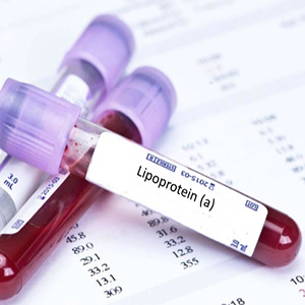It is a lipoprotein particle found in the bloodstream. The structure of the Lp-a particle is very similar to an LDL particle linked to a plasminogen molecule. Plasminogen is involved in dissolving blood clots. The function of Lp(a) is unknown.
How is Lp-a related to atherosclerosis?

Lp-a is a marker for the development of atherosclerotic vascular disease.
Individuals with elevated Lp-a are definitely at an elevated risk of developing atherosclerosis.
Whether Lp-a is directly involved in the atherogenic process has not been determined.
The concentration of Lp-a is race specific.
How is Lp-a treated ?
Treatments of Lp-a are very few. Nicotinic acid has been shown to lower concentration of Lp-a to a small degree as well as estrogen supplementation.
Is it beneficial to treat Lp-a?
Whether direct treatment to lower Lp-a is helpful in preventing atherosclerotic vascular events has yet to be demonstrated. Thus, it is unknown whether treatment of Lp-a is beneficial.
How should therapy change if Lp-a is elevated?
It is clear that Lp-a is a marker for development of atherosclerotic events. It is felt that in individuals with elevated Lp-a the LDL cholesterol is more toxic. Current use of Lp-a revolves around determining the intensity of therapy of the LDL cholesterol. In the presence of elevated Lp(a) there is evidence that the LDL cholesterol should be treated more aggressively and to lower targets. Global risk factor modification should be more intense.